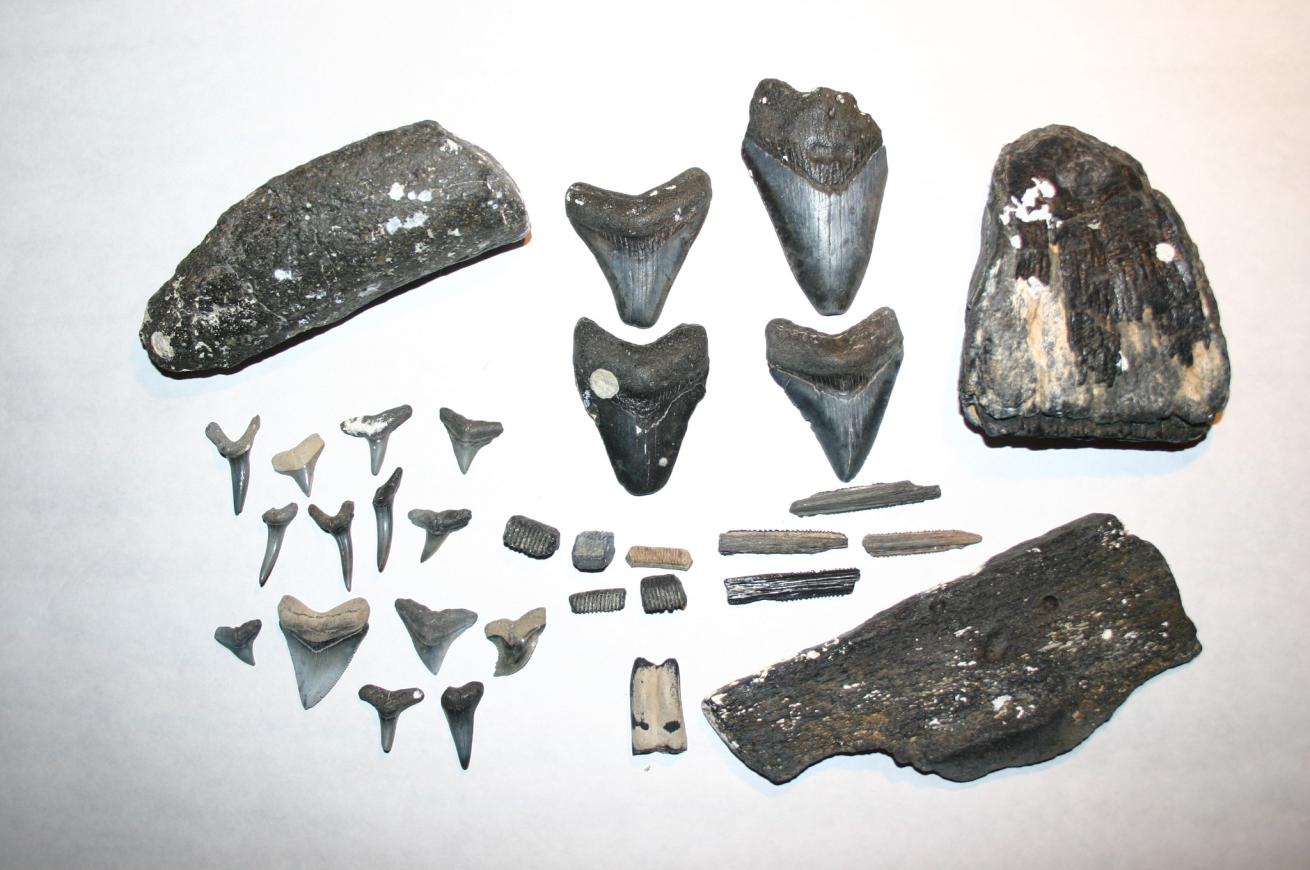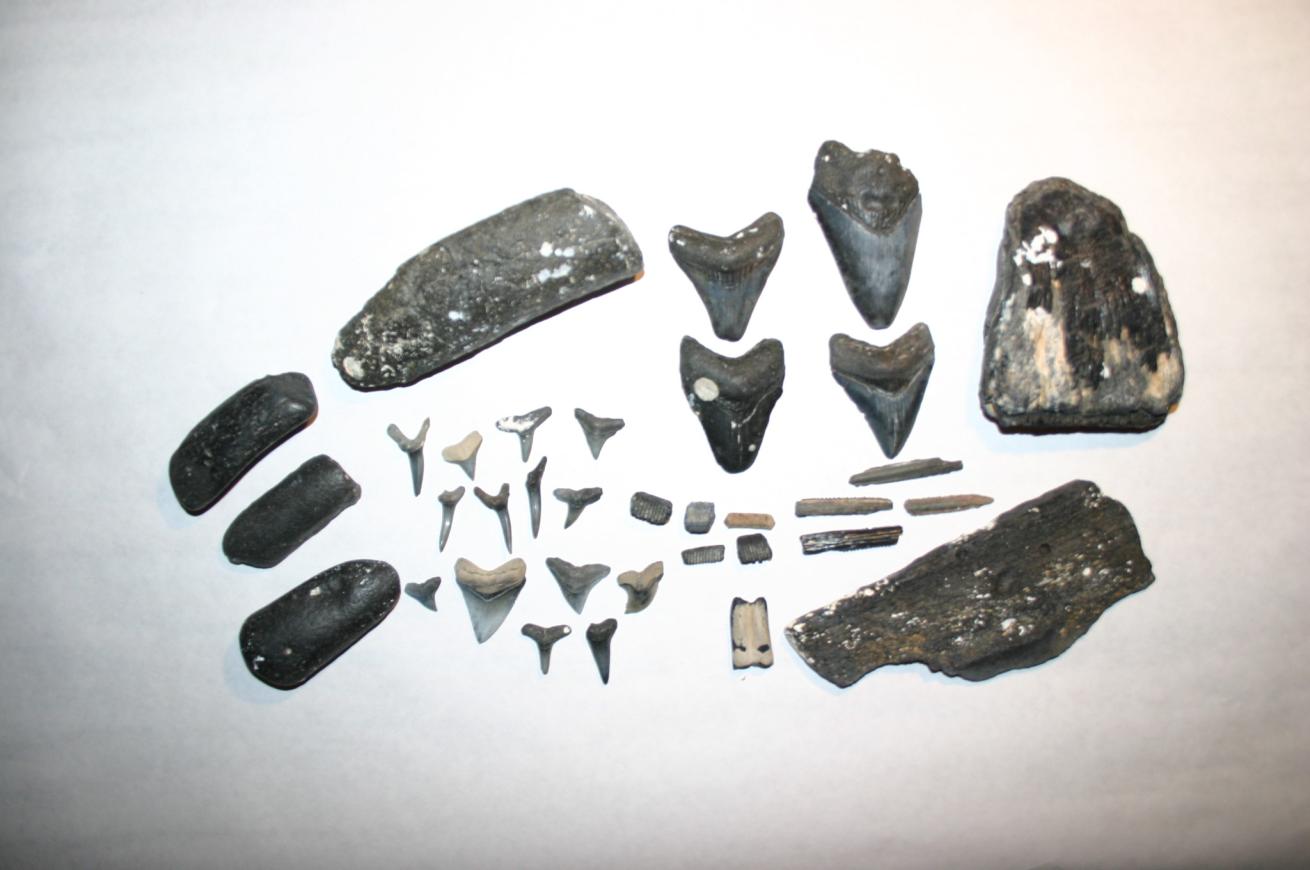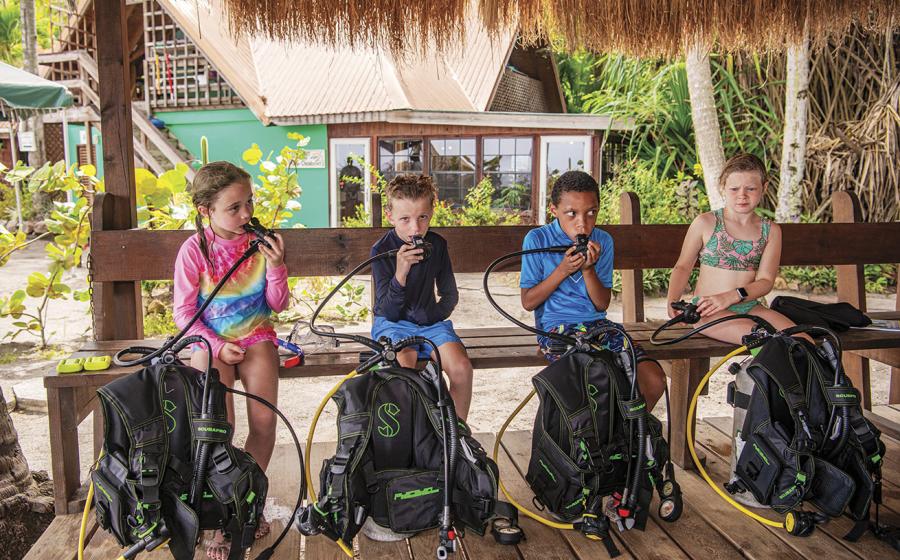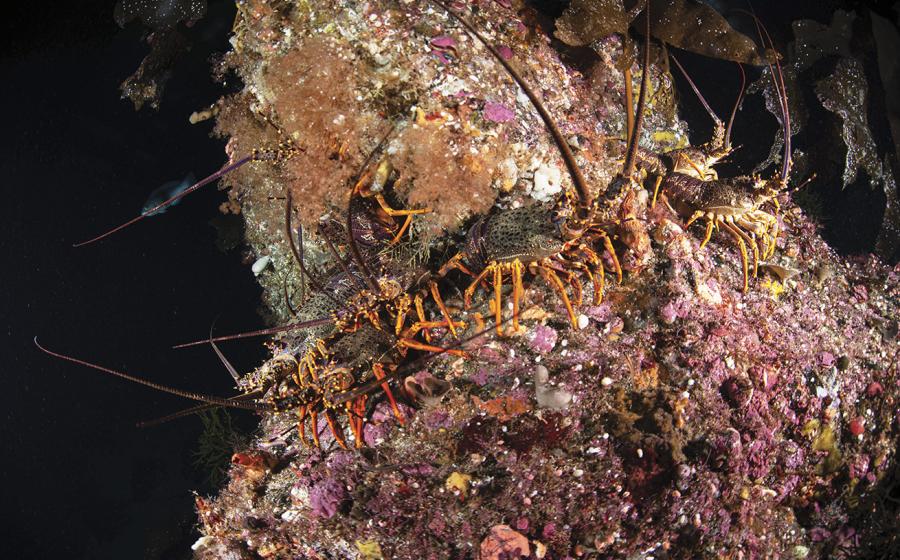Searching for sea monsters

My wife Kathie and I have dove from the islands of Micronesia to most places in the Caribbean over the years. But the most "fun" dive we make is to Venice Florida to dive the Gulf of Mexico, searching for prehistoric fossilized sharks teeth from the giant white shark known as Carharocles Megalodon.
Our buddy Megalodon lived in the Miocene to Pliocene periods, roughly between 2 to 28 million years ago. And that is great news to every scuba diver out there. Teeth are found on almost every dive with sizes ranging from 1 inch upwards of 6 to 7 inches. Scientists say that 1" of tooth equals approximately 10' of shark so doing the math you can quickly see my 5'9" frame would not even have been a decent sized spinning lure to these guys.
This area of Venice Florida is home to a prehistoric river that ran from the eastern seaboard under Florida and out into the Gulf of Mexico. Fossils have been located and dated back to the Eocene period so we are talking about 50 million years more or less of river life. What this means to the modern day divers who search this river bottom 2 miles off of Venice Beach is a bottom littered in history.
In addition to Meg's big chompers, divers return with bags of shark teeth from Mako, Sand, Snaggletooth, Tiger and Bull sharks. But that's not all; fossilized jaw bones and barbs from Sting Rays are common, along with prehistoric horse teeth. Colombian Mammoth and Mastodon teeth, Bison teeth and even Camel teeth have been found (see attached picture). Fossilized bones from Manatees, Whales, turtle shells and even snake vertebrae lay on the sandy and live rock bottom.
So how's the diving? Well we all know the Gulf of Mexico is not known for its pristine visibility but trust me you will care less. Normally you will have 10 to 15 feet of visibility. The dives are all in about 25' of water and Steve's charter includes both your weights and two 80 cu ft tanks. The idea here is to drop to the bottom and for the first time ever no one will be yelling at you to get your buoyancy right. You want to settle down on the bottom and slowly move in whatever direction Steve told you to during your dive briefing.
Dive times routinely run to 90 minutes or longer and with summer water temps at 86* or warmer a full skin works just fine. You will begin to see "shapes" in and on the sand, bones, both rounded manatee ribs and flat whale bones are everywhere. Soon you will notice a small shark tooth laying right in front of you, once you recognize the first one the rest seem to just jump out at you. If you're real lucky at the end of the day you could hold in your hand a tooth so big that I don't care how much of a macho diver you are; it's just too big for a shark tooth necklace!
Check out Capt. Steve Thacker's West Coast Scuba at www.floridascuba.com.

My wife Kathie and I have dove from the islands of Micronesia to most places in the Caribbean over the years. But the most "fun" dive we make is to Venice Florida to dive the Gulf of Mexico, searching for prehistoric fossilized sharks teeth from the giant white shark known as Carharocles Megalodon.
Our buddy Megalodon lived in the Miocene to Pliocene periods, roughly between 2 to 28 million years ago. And that is great news to every scuba diver out there. Teeth are found on almost every dive with sizes ranging from 1 inch upwards of 6 to 7 inches. Scientists say that 1" of tooth equals approximately 10' of shark so doing the math you can quickly see my 5'9" frame would not even have been a decent sized spinning lure to these guys.
This area of Venice Florida is home to a prehistoric river that ran from the eastern seaboard under Florida and out into the Gulf of Mexico. Fossils have been located and dated back to the Eocene period so we are talking about 50 million years more or less of river life. What this means to the modern day divers who search this river bottom 2 miles off of Venice Beach is a bottom littered in history.
In addition to Meg's big chompers, divers return with bags of shark teeth from Mako, Sand, Snaggletooth, Tiger and Bull sharks. But that's not all; fossilized jaw bones and barbs from Sting Rays are common, along with prehistoric horse teeth. Colombian Mammoth and Mastodon teeth, Bison teeth and even Camel teeth have been found (see attached picture). Fossilized bones from Manatees, Whales, turtle shells and even snake vertebrae lay on the sandy and live rock bottom.
So how's the diving? Well we all know the Gulf of Mexico is not known for its pristine visibility but trust me you will care less. Normally you will have 10 to 15 feet of visibility. The dives are all in about 25' of water and Steve's charter includes both your weights and two 80 cu ft tanks. The idea here is to drop to the bottom and for the first time ever no one will be yelling at you to get your buoyancy right. You want to settle down on the bottom and slowly move in whatever direction Steve told you to during your dive briefing.
Dive times routinely run to 90 minutes or longer and with summer water temps at 86* or warmer a full skin works just fine. You will begin to see "shapes" in and on the sand, bones, both rounded manatee ribs and flat whale bones are everywhere. Soon you will notice a small shark tooth laying right in front of you, once you recognize the first one the rest seem to just jump out at you. If you're real lucky at the end of the day you could hold in your hand a tooth so big that I don't care how much of a macho diver you are; it's just too big for a shark tooth necklace!
Check out Capt. Steve Thacker's West Coast Scuba at www.floridascuba.com.







